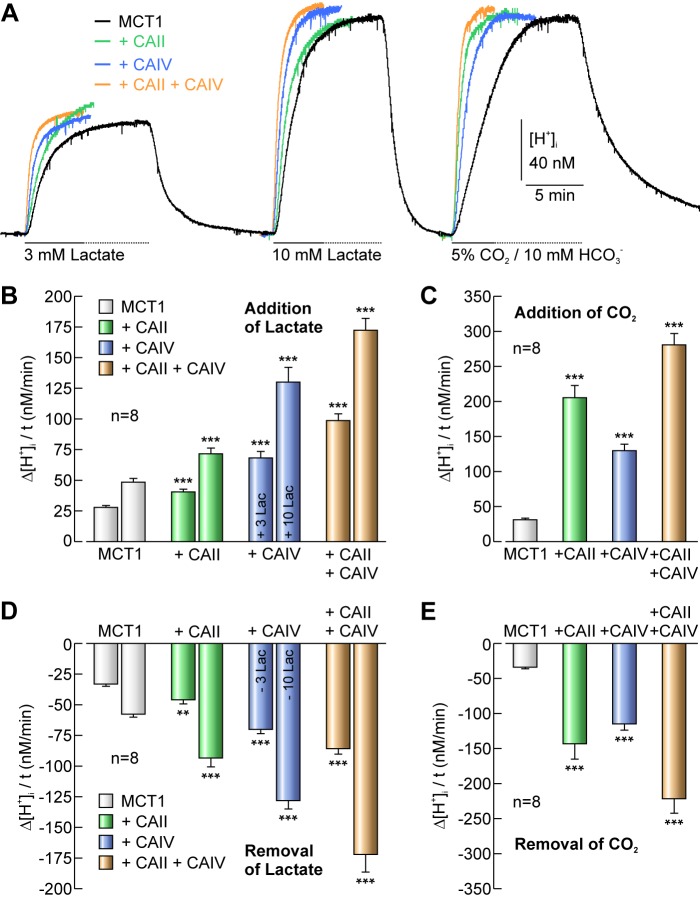FIGURE 5.
Extracellular CAIV and intracellular CAII work together to enhance transport activity of MCT1. A, original recordings of [H+]i in Xenopus oocytes expressing MCT1 (black), expressing MCT1 + injected with 50 ng of CAII protein (green), coexpressing MCT1+CAIV (blue) and co-expressing MCT1+CAIV + injected with CAII protein (orange), respectively, during application of 3 and 10 mm lactate and 5% CO2/10 mm HCO3−. Rate of rise in [H+]i induced by application of lactate (B) and 5% CO2/10 mm HCO3− (C), respectively, in oocytes expressing MCT1, expressing MCT1 + injected with 50 ng of CAII protein, coexpressing MCT1+CAIV and co-expressing MCT1+CAIV + injected with CAII protein, respectively. Rate of intracellular alkalinization induced by removal of lactate (D) and 5% CO2/10 mm HCO3− (E), respectively, in oocytes expressing MCT1, expressing MCT1 + injected with 50 ng of CAII protein, coexpressing MCT1+CAIV and co-expressing MCT1+CAIV + injected with CAII protein, respectively. Asterisks at the bars for MCT1+CA refer to the values of MCT1-expressing cells.

